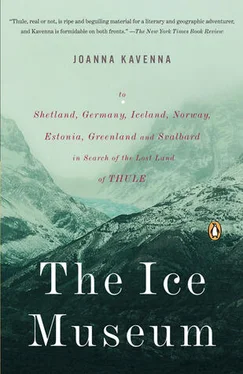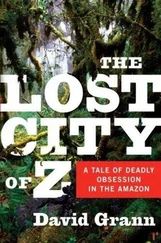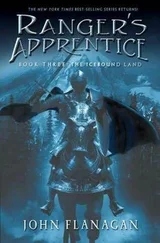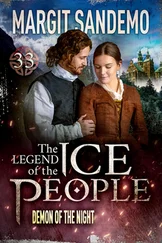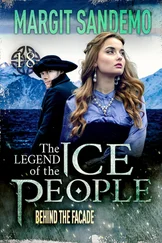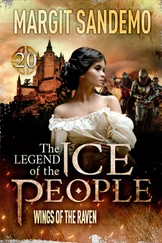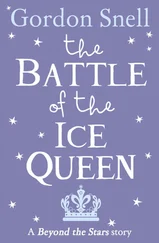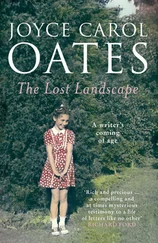During a long humid summer in New York the whirr of the air conditioning unit had kept me awake for hours at night, and my thoughts had fluttered and twirled before resting on images of whiteness, vast plains of white ice, stretching limitlessly into the distance. I would doze, and the air conditioning unit would become a fresh Arctic breeze, blasting into my face, as I imagined a long, low plain of ice.
These were gaps in the old myth of Thule, the parts that remained uncertain through the centuries: just how far north Thule was, whether the sea had been frozen or sluggish, whether there had been midnight sun for months or just at the height of summer, whether the land was inhabited or empty, whether Thule was an island or not. These gaps meant that Thule could be formed and reformed, depending on your anxieties and predilections. Depending on what an Arcadia meant to you. It was a myth that could be made to fit, tailored and snipped at the edges, parts of it swept away, thrown in a cupboard, other parts cut in bright colours.
You could reinvent Thule whenever you felt a former Thule had faded, become tarnished. Even as Burton announced the loss of awe, kicking away the previous travellers, who were left fawning on the lava, his gaze turned towards the vast and ancient ice cap in the south. Despite his scepticism, he found he wasn’t ready to leave Iceland. After Mývatn Burton carried on around the island, trotting on horseback across the lava deserts, staring ferociously at the view. He found there was something he liked, an element which compelled him: the silence of the plains, the ice spreading across the tops of the mountains, concealing ancient rocks. There was a silent glacier in the south of Iceland, a huge white blot not even mapped in 1872, an ice cap called Vatnajökull. A few years after Burton left, a determined man called William Watts crossed the glacier, travelling northwards from Núpstaður to Reykjahlið. Watts wrote later about ‘the expanse of snow, losing itself in the northern distance; pure, silent, dazzling, beautiful, and spotless, save where a few black peaks and uncouth masses of dark rock protruded through the frozen covering.’ It was a realistic sublime: the glacier was beautiful and spotless; the ice fields of Iceland, looming above the blistered plains and the curdled pools, supplied a sense of ancient space. It was a Thule of silence, a Thule of magnificent mountains and cold glaciers. A deep-time Thule, the indifferent ages revealed in nature, in the vast and implacable ice.
There’s a ragged dust track leading to Vatnajökull which runs along the coast, weaving around the edges of the fjords. It passes cairns and stunted trees clinging to the dust, leaving the orange sand plains of Mývatn and passing into the monochrome mountains of the coast and the mist-shrouded plains. Cone mountains stand silhouetted against the darkening skies. In places the road is a rock track, hurling up pebbles as it passes through a lava field, the moss bright against the sand and the lava disappearing into a soft valley of low hills. The clouds are dark, hovering low above the mountains. A sign by the road says: DWELL IN A TURF COTTAGE LIKE THE OLD ICELANDIC VIKINGS DID!—but there is no trace of a cottage, or any directions to one. The sign stands, like a random lifestyle suggestion in the wilderness. The road runs across a river, into a terrain of rain-drenched hills and snow-capped mountains. The lava plains recede, and the mountainsides are green. A great plume of mist moves across the mountains ahead, drifting along the valley floor.
The white fog lies like wool on the ground, as I travel around the coast towards the south. The scree mountains disappear into the whiteness. The mountains tower above the concrete bunker houses. The road winds in an intricate pattern round the fjords, through green valleys, with birch trees and shrubs. The sea is white under a lingering mist; low rocky islands appear dimly off the shore. The basalt sides of the rocks have been carved into sharp columns and gullies by the pressure of ancient ice. The gradient sharpens, lifting the road into the cloud and rain; the bus passes into blankness.
Basalt chimneys disappear into the mist. At the coast, odd lonely rock formations emerge out of water, their sides rising steeply, speckled with moss. The mountains are divided into rugged shelves, which run horizontally along the rock faces. Everything is tinged with white mist shadow, thickening as it drifts up the sides of the mountains like smoke. In the south, around the town of Höfn, a junction for buses and four-wheel drives, the glacier tongues appear between the snow-covered mountains, lolling down the gorges, sending out a brilliant white glow.
In the languid summer evenings, Iceland is a nature church, with everyone bowing to the scenery. There’s a cult of silence in contemporary Iceland, a cult of pure white plains and unpopulated mountains. Contemporary travellers turn to the astonishing emptiness of the interior, the riveting loveliness of the valleys, the peacefulness. Everyone is driving around Iceland in four-wheel drives, trying to get away from it all. Sometimes they drive towards the interior, bouncing their tyres on the rocks. But mostly they circle the island. The roads are never crowded. Only at the pit stops, the small towns, can you see the other tourists. And whenever we stop and talk to each other, we all say the same thing: the nature, the nature is so beautiful, so empty. We like the long shadows falling across the iridescent moss, the pewter lakes, the slow dying of the sun. Beautiful, we agree, and then we all climb back into our jeeps and continue on this quest for stillness. It is an anti-social impulse; the scenes we prefer are the mountains stripped of other people, the roads free of cars. This cult of silence understands purity as a plain white space, a space without the contaminating presence of other worshippers. A few we accept, a few hushed voices on the side of a glacier, a few demure trekkers nodding apologetically on a cliff face. But the hordes are antithetical to the stillness, so everyone is quick to leave the pit stops, filling up their four-wheel drives and taking off again into the silence.
In the phosphorescent morning sky, the cars move past the ice. The ice is piled high like a wall, stacked above the lava ground. At the base of the glaciers, the land is covered with pointed dunes of grey dust and moss. At the glacial lagoon of Jökulsárlón all the buses stop, and we all emerge into the frozen silence of the glacier pool. There are dozens of buses there, hundreds of tourists clutching cups of tea, but they fade into the background and the view is all ice—enormous chunks, patterned with dirt, like vast chunks of liquorice, striped black and white and blue. The bergs glisten as they move, slowly, towards the ocean. The sky is pale; everything seems blanched by the ice. The mountains stand behind; the glacier merges with the whiteness of the sky. Hundreds of terns circle around the river’s edge. The bergs are stained with colours and reflected on the clear water, every berg ghosted by its mirror image. There are tour guides, saying that the view is transient; the glacier is retreating, causing the shoreline to erode, threatening the bridge. One day the road may pass this spot, and all the ice will have gone, they say. Everyone directs a camera at the ice, trying to preserve the place in holiday photographs.
I stand at the edge of the lagoon, sipping tea, watching the bergs twist slowly in the water.
After the glacial lagoon, the tourists seemed to vanish. The wilderness trekking centre at Vatnajökull was almost deserted. ‘Be-sides, ’ said the manager, ‘it has rained solidly for five days, so the tents have all been packed away, and the four-wheel drives have driven off.’ He told me to camp anywhere. ‘Everywhere is wet, it doesn’t really matter where,’ he added. Five days of torrential rain had swept across the valley, soaking the moraine sands, turning everything to mud. I picked a path through the lower valley, and dumped my bags on a patch of grass, where they sank slightly into the spongy sand. Delaying the moment when I would have to fumble with the tent poles, greasing my hands with mud, I left everything in a dirty pile and walked towards the glacier. The glacier was compelling: it had left debris across the plain, and it absorbed the sky, spreading across the whiteness. From the wilderness trekking centre I could see only a fraction of the mass of ice, and this fraction stretched for miles. I found no one on the paths as I passed a farm perched on the edge of a cliff and clambered over the sodden ground towards a dirty glacial tongue and a long white river. The mist was closing around the rocks. The rain began to fall again as I descended along a long ridge, with the glacial tongue of Skaftafellsjökull visible below. There were vast ridges in the ice, coloured a greasy grey, and grey lines like shadows beneath waves, successive ice waves. I took a detour off the path and walked through wet marshes until I was soaked, fording rivers, losing the way.
Читать дальше
